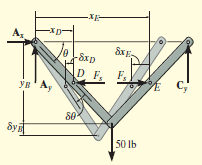Unit 3
Friction
Q1. Two blocks A and B of weights 1 kN and 2 kN respectively are in equilibrium position as shown in Fig. If the coefficient of friction between the two blocks as well as the block B and the floor is 0.3,find the force (P) required to move the block B.
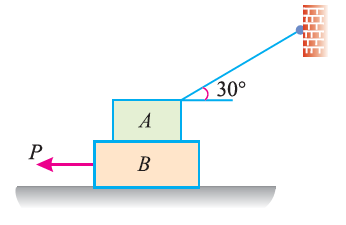
Solution:
Given: Weight of block A (WA) = 1 kN; Weight of block B (WB) = 2 kN and
coefficient of friction (μ) = 0.3.
Forces acting on blocks A and B are plotted respectively as,
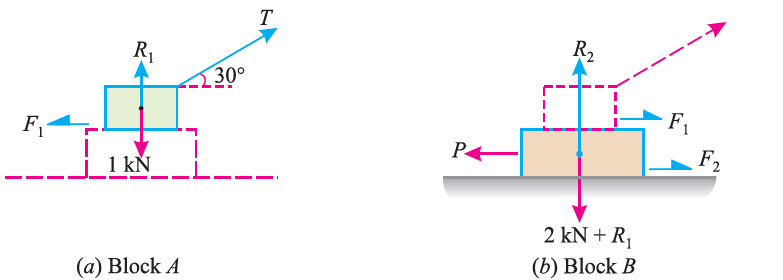

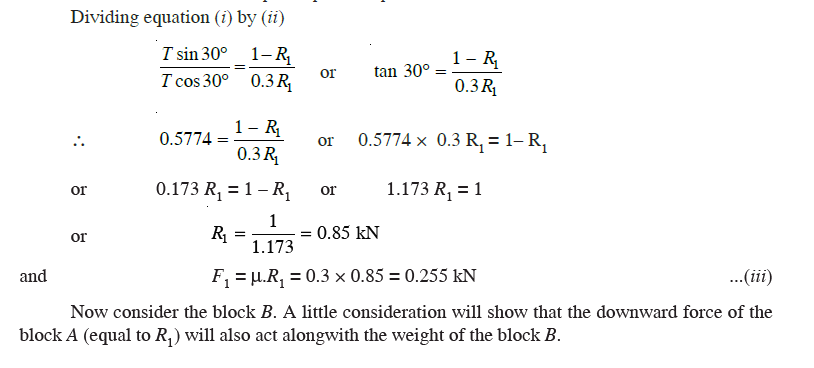

Q2. What is the maximum load (W) which a force P equal to 5 kN will hold up, if the coefficient of friction at C is 0.2 in the arrangement shown in Fig. Neglect other friction and weight of the member. If W = 3 kN and P = 4.5 kN, what are the normal and tangential forces transmitted at C ?
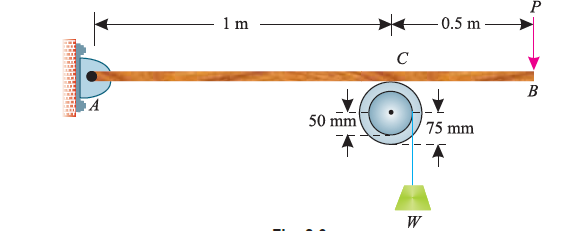
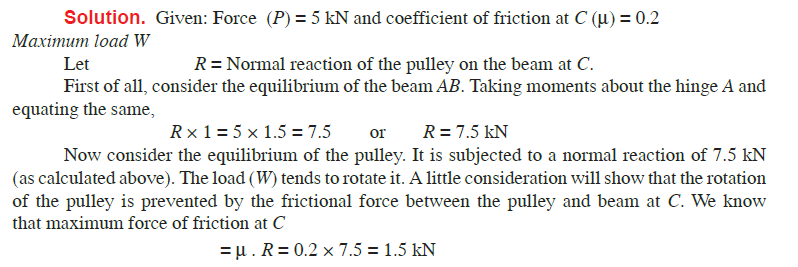
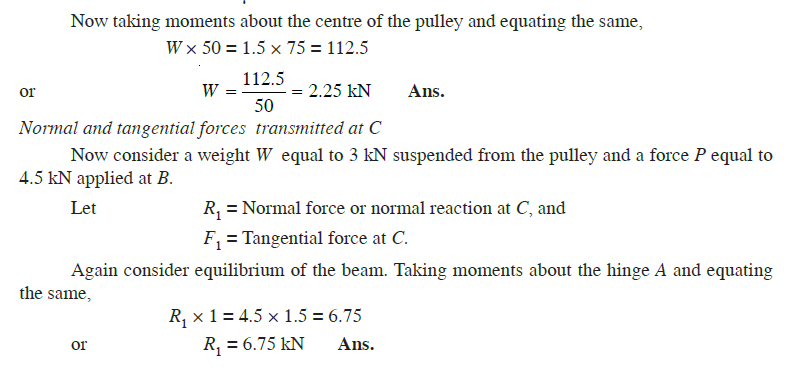

Q3. A body of weight 500 N is lying on a rough plane inclined at an angle of 25° with the horizontal. It is supported by an effort (P) parallel to the plane as shown in Fig. Determine the minimum and maximum values of P, for which the equilibrium can exist, if the angle of friction is 20°.



Q4. An inclined plane as shown in Fig. below. is used to unload slowly a body weighing 400 N from a truck 1.2 m high into the ground. The coefficient of friction between the underside of the body and the plank is 0.3. State whether it is necessary to push the body down the plane or hold it back from sliding down. What minimum force is required parallel to the plane for this purpose ?
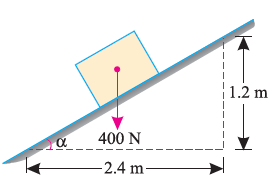
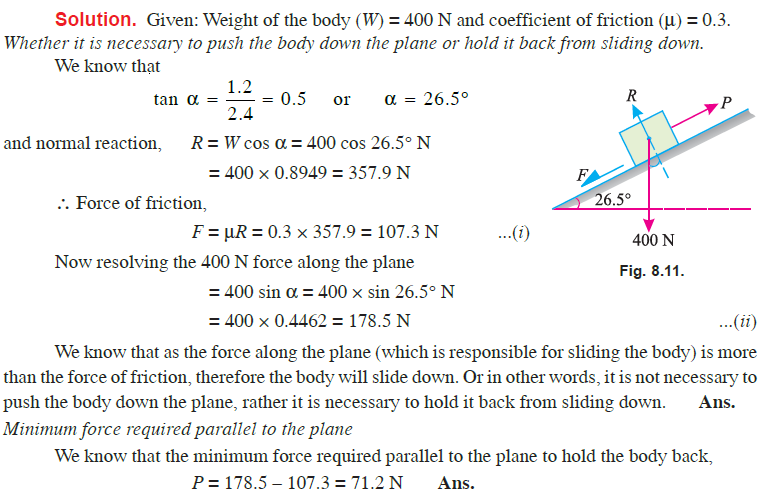
Q5. It is observed that when the bed of the dump truck is raised to an angle of the vending machines will begin to slide off the bed, Fig. shown. Determine the static coefficient of friction between a vending machine and the surface of the truckbed.
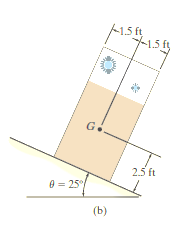
Solution:
The free body diagram of the component will be as,
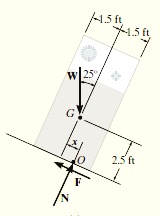
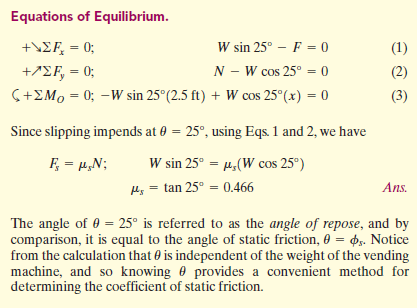
Q6. The uniform 10-kg ladder in Fig. rests against the smooth wall at B, and the end A rests on the rough horizontal plane for which the coefficient of static friction is 0.3. Determine the angle of inclination of the ladder and the normal reaction at B if the ladder is on the verge of slipping.
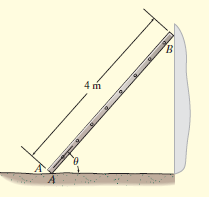
Solution:
Free-Body Diagram. As shown on the free-body diagram, Fig. below, the frictional force must act to the right since impending motion at A is to the left.
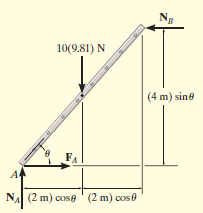

Q7. Beam AB is subjected to a uniform load of 200N/m and is supported at B by post BC, Fig. below. If the coefficients of static friction at B and C are 0.2 and 0.5, determine the force P needed to pull the post out from under the beam. Neglect the weight of the members and the thickness of the beam.
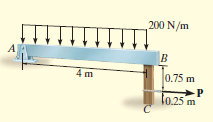
Solution:
Free body diagram: The free body diagram is drawn as shown below.
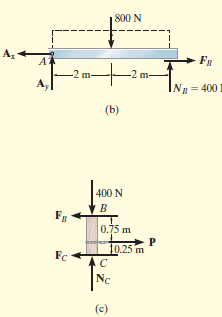
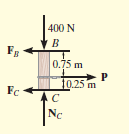
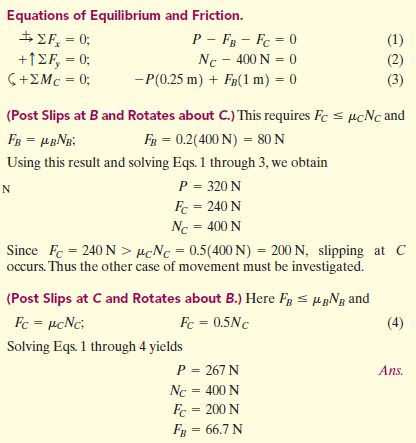
Q8. The turnbuckle shown in Fig. below has a square thread with a mean radius of 5 mm and a lead of 2 mm. If the coefficient of static friction between the screw and the turnbuckle is 0.25, determine the moment M that must be applied to draw the end screws closer together.
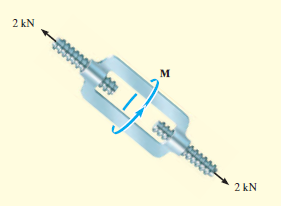

Q9. Determine the required force P in Fig. 11–7a, needed to maintain equilibrium of the scissor’s linkage when 600. The spring is unstretched when 300 . Neglect the mass of the links.
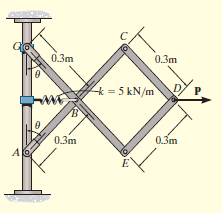
Solution:
Free body is drawn as follows:
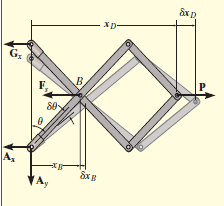
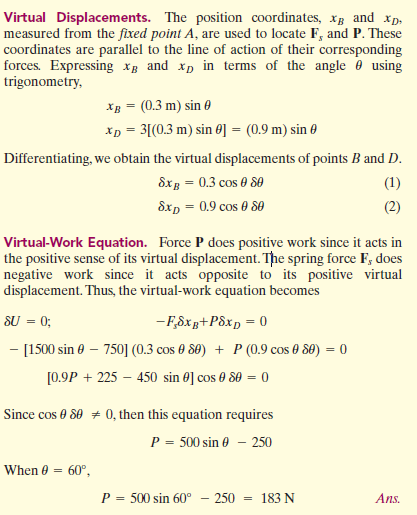
Q10. If the box in Fig. below has a mass of 10 kg, determine the couple moment M needed to maintain equilibrium when . Neglect the mass of the members.

Solution:
Initially, free body diagram is drawn as
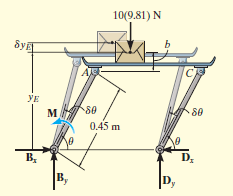
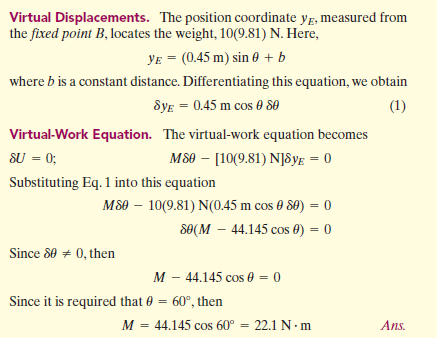
Q11. The mechanism in Fig. below supports the 50-lb cylinder. Determine the angle for equilibrium if the spring has an unstretched length of 2 ft when angle is 0. Neglect the mass of the members.
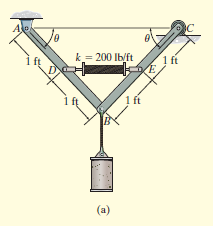
Solution:
The free body diagram is as shown in fig. below.
